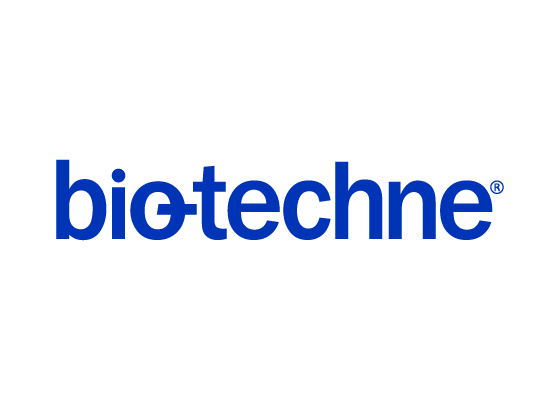Bovine AGE-BSA Biotinylated Protein, CF
R&D Systems, part of Bio-Techne | Catalog # BT4127

Key Product Details
Source
Conjugate
Applications
Product Specifications
Source
Advanced glycation end product (AGE) of bovine serum albumin (AGE-BSA) was prepared by incubating BSA and glucose under sterile conditions at 37 °C for 60 days and then biotinylated.
Endotoxin Level
Activity
Formulation, Preparation and Storage
BT4127
| Formulation | Lyophilized from a 0.2 μm filtered solution in PBS. |
| Reconstitution | Reconstitute at 1 mg/mL in sterile PBS. |
| Shipping | The product is shipped at ambient temperature. Upon receipt, store it immediately at the temperature recommended below. |
| Stability & Storage | Use a manual defrost freezer and avoid repeated freeze-thaw cycles.
|
Background: AGE-BSA
Advanced glycation end products (AGEs) are formed by the non-enzymatic reaction of reducing sugars with amino groups on macromolecules (1, 2). Glycation is accomplished by the Maillard reaction, which is a multistep process that begins with Schiff base formation between the amine and the carbonyl group on the sugar followed by rearrangement to form Amadori intermediates. The intermediates are oxidized to highly reactive dicarbonyl compounds which target the primary amino groups in lysine and arginine residues (3). Some AGEs involve protein crosslinking, while others, such as N epsilon-carboxymethyl lysine (CML), are confined to single molecules (3). The final step of AGE formation is essentially irreversible, but the Schiff bases and Amadori intermediates are susceptible to degradation (4, 5). The Maillard reaction is accelerated under hyperglycemic and oxidative conditions. Renal failure, dietary AGE intake, and the normal aging process also contribute to the in vivo accumulation of AGEs (6 - 8). Increased AGE accumulation may be both a cause and effect of diabetes as well as multiple chronic inflammatory conditions such as Alzheimer’s disease, atherosclerosis, and arthritis (1, 2). AGEs can bind a variety of receptors, including RAGE, AGE-R1, -R2, -R3, and the scavenger receptors CD36, LOX-1, SR-AI, SR-AII, SR-BI, Stabilin-1/FEEL-1, and Stabilin-2/FEEL-2 (1). RAGE is a multiligand receptor that is upregulated on macrophages, monocytes, smooth muscle cells, and endothelial cells in response to AGE accumulation (9). RAGE activation induces a broad proinflammatory response (1, 2, 10). The increased production of reactive oxygen species promotes additional AGE formation and RAGE upregulation, a cycle that exacerbates diabetic complications and inflammation-induced tissue injury (1, 2).
References
- Goldin, A. et al. (2006) Circulation 114:597.
- Ramasamy, R. et al. (2005) Glycobiology 15:16R.
- Reddy, V.P. and A. Beyaz (2006) Drug Discov. Today 11:646.
- Szwergold, B.S. et al. (2001) Diabetes 50:2139.
- Szwergold, B.S. et al. (2005) Ann. N.Y. Acad. Sci. 1043:845.
- Thornalley, P.J. (2006) J. Ren. Nutr. 16:178.
- Chuyen, N. et al. (2006) Mol. Nutr. Food Res. 50:1140.
- Yin, D. and K. Chen (2005) Exp. Gerontol. 40:455.
- Bierhaus, A, et al. (2006) Curr. Opin. Investig. Drugs 7:985.
- Kislinger, T. et al. (1999) J. Biol. Chem. 274:31740.
Long Name
Alternate Names
Additional AGE-BSA Products
Product Documents for Bovine AGE-BSA Biotinylated Protein, CF
Product Specific Notices for Bovine AGE-BSA Biotinylated Protein, CF
For research use only
